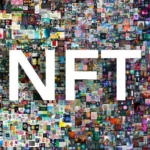Decentralized Finance (DeFi) has reshaped how individuals interact with financial services, offering unprecedented access to trading, lending, staking, and more without intermediaries. A crucial step in using any DeFi application is connecting your cryptocurrency wallet.
This guide breaks down how to connect a wallet to DeFi applications securely and efficiently, explores different types of wallets, highlights best practices, and discusses additional tools and safety tips.
What Is a Wallet in DeFi?
A cryptocurrency wallet in the context of DeFi is a software application or hardware device that allows users to store, manage, and interact with digital assets on blockchain networks. Unlike centralized exchanges, wallets give users full control over their funds and private keys.
Types of Wallets for DeFi
| Wallet Type | Description | Examples |
|---|---|---|
| Browser Wallet | Installed as browser extensions; user-friendly and widely used. | MetaMask, Rabby, Coinbase Wallet |
| Mobile Wallet | Mobile apps for iOS and Android that offer on-the-go DeFi access. | Trust Wallet, Argent |
| Hardware Wallet | Physical devices that store private keys offline for maximum security. | Ledger, Trezor |
| Web Wallet | Online-based wallets that work through a website interface. | MyEtherWallet, Portis |
Steps to Connect a Wallet to a DeFi Application
Choose the Right Wallet
Select a wallet compatible with the blockchain on which the DeFi app operates (e.g., Ethereum, BNB Chain, Solana). MetaMask is a popular choice for Ethereum-based applications.
Install or Access the Wallet
- Browser Wallets: Add the extension from the official Chrome Web Store or Firefox Add-ons.
- Mobile Wallets: Download from the App Store or Google Play.
- Hardware Wallets: Connect via USB and use companion software.
Set Up the Wallet
Create a new wallet or import an existing one using a recovery phrase (seed phrase). Secure this phrase offline and never share it.
Fund the Wallet
Transfer cryptocurrencies (e.g., ETH, BNB, MATIC) into your wallet from an exchange or another wallet. You will need native tokens to pay for transaction fees (gas).
Visit the DeFi Application
Go to the official website of the DeFi application you wish to use (e.g., Uniswap, Aave, Curve).
Click “Connect Wallet”
Most DeFi apps have a prominent button labeled “Connect Wallet” or “Connect.”
Approve the Connection
A popup will appear in your wallet prompting you to approve the connection. Confirm the action.
Interact with the App
Once connected, you can perform various actions like swapping tokens, providing liquidity, or staking assets.
Common Blockchain Networks and Wallets
| Blockchain | Common Wallets | Notable DeFi Apps |
|---|---|---|
| Ethereum | MetaMask, Ledger, Trust Wallet | Uniswap, Aave, Curve |
| BNB Smart Chain | MetaMask, Trust Wallet, SafePal | PancakeSwap, Venus |
| Polygon | MetaMask, Coinbase Wallet | QuickSwap, Aave |
| Avalanche | MetaMask, Core, Ledger | Trader Joe, Pangolin |
| Solana | Phantom, Solflare, Ledger | Raydium, Orca |
Additional Features and Tools
WalletConnect
WalletConnect is an open-source protocol that enables users to connect their mobile wallets to desktop apps via QR code scanning. Many DeFi platforms support WalletConnect.
Multi-Chain Wallets
Some wallets, like Rabby and Trust Wallet, support multiple chains in a single interface, making it easier to manage assets across different networks.
Portfolio Trackers
Integrate your wallet with portfolio management tools such as Zapper, DeBank, or Zerion to monitor DeFi positions and asset values in real-time.
Gas Fee Estimators
Use tools like ETH Gas Station or Blocknative to estimate transaction fees and avoid overpaying.
Security Best Practices
- Secure Your Seed Phrase: Store it in multiple offline locations.
- Enable Two-Factor Authentication: Especially for web wallets.
- Use Hardware Wallets for Large Funds: Minimizes risk from malware.
- Double Check URLs: Always ensure you are using the official websites of DeFi platforms.
- Revoke Permissions Regularly: Use tools like Revoke.cash to manage app access.
- Avoid Public Wi-Fi: Use a VPN and secure internet connection.
Troubleshooting Connection Issues
| Issue | Solution |
|---|---|
| Wallet not detected | Refresh the page, check extension status, or reconnect hardware. |
| Incorrect network selected | Switch to the required blockchain network in your wallet. |
| Transaction not confirming | Increase gas fees or check network congestion. |
| UI glitches on DeFi app | Clear cache, try a different browser, or disable browser plugins. |
Advanced Topics
Layer 2 Networks
Connect your wallet to Layer 2 solutions (e.g., Arbitrum, Optimism) to reduce gas fees. Many wallets support bridging assets from Layer 1 to Layer 2.
Smart Contract Interactions
Advanced users may interact directly with smart contracts via explorers like Etherscan. This allows for more flexibility but requires careful attention to detail.
Using Multiple Wallets
Create and manage multiple wallets for different purposes—daily use, long-term storage, testing—to reduce risk and organize activities.
Cross-Chain Bridges
Use trusted bridge services (e.g., Multichain, Synapse, Wormhole) to transfer assets across blockchains. Always verify bridge compatibility and fees.
Conclusion
Connecting a wallet to DeFi applications is a gateway to decentralized financial freedom. Understanding how different wallets work, which ones suit your needs, and following secure practices can significantly enhance your DeFi experience.
From browser extensions like MetaMask to hardware wallets for added security, there’s a solution for every user. Make sure to stay informed, cautious, and proactive as you explore the fast-evolving DeFi landscape.
A properly connected and managed wallet is your personal key to unlocking everything from yield farming and staking to governance and decentralized lending. As DeFi grows, so too does the importance of understanding how to connect safely and effectively.







